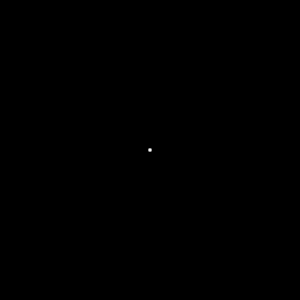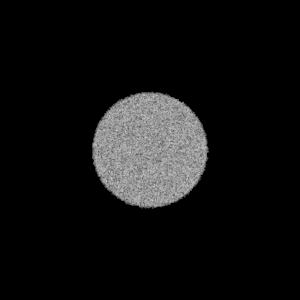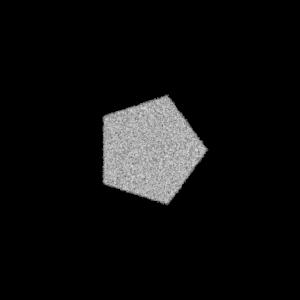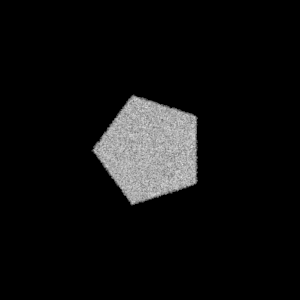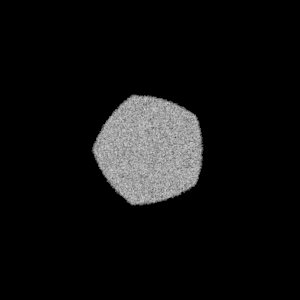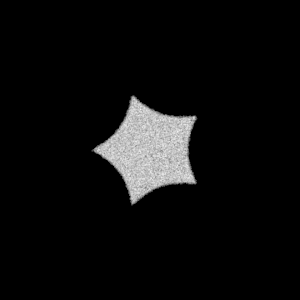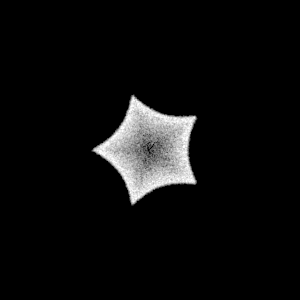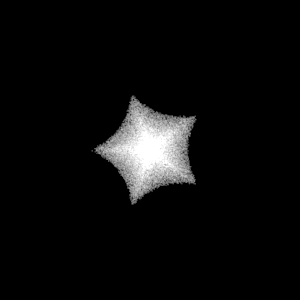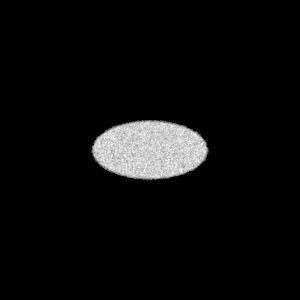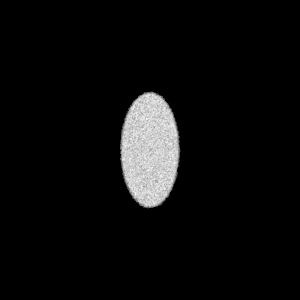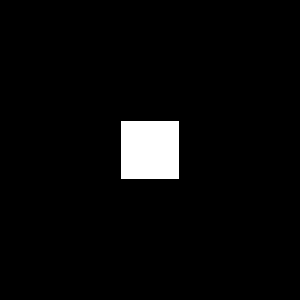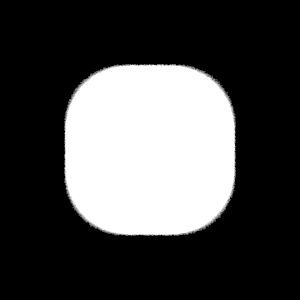...
The aperture shape is controlled by the aperture hider option:
...
camera projection options, such as those found in PxrCamera.
Sides: The number of diaphragm blades does not technically control bokeh, but does control the shape of your blur circle (but not how light is distributed within it). Changing the number of sides causes our once perfect circular highlights to facet with as many sides as specified (three sides, for example, produces a triangle).
...
The default aperture is circular; we can see this by using a small, bright point that is out of focus. Ordinarily, a point this out of focus would not be visible - its light would be too spread out over the film plane - so we have to make it artificially bright to show up (RIB for example). Yielding this image: | [0 0 0 0] |
By setting the sides to 5, the aperture becomes a pentagon. | [5 0 0 0] |
Setting the angle to 36 rotates the aperture counterclockwise by 36 degrees. | [5 36 0 0] |
A positive roundness value makes the sides of the pentagon bow outward. | [5 36 0.5 0] |
A negative roundness makes the sides of the pentagon bow inward. Note that because the light is spread over a smaller area, the bokeh here is somewhat brighter. | [5 36 -0.8 0] |
A positive density makes the aperture transmit more light at its edges. | [5 36 -0.8 0.7] |
A negative density makes the aperture transmit more light at its center. | [5 36 -0.8 -0.7] |
We can also modify the eccentricity of the "ellipse of confusion"--the region on the film plane hit by samples from an object that is not in focus--using the dofaspect parameter. A value greater than 1 makes the blur bigger horizontally (e.g., 2.0 here): | |
A value between 0 and 1 makes the blur bigger vertically (e.g., 0.5 here). This emulates the oval-shaped defocus blur produced by an anamorphic lens. | |
Though not directly controllable as a setting, it's worth noting that when a source of light gets close in size to the circle of confusion, its shape will also begin to have a significant effect on the shape of the bokeh. For example, if we had seen a larger square instead of a tiny point through the default circular aperture, the bokeh would be shaped like this (shown without tonemapping in order to emphasize the shape): | |

